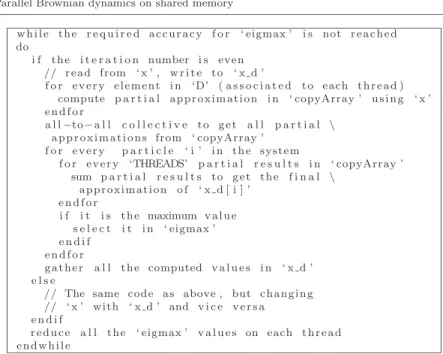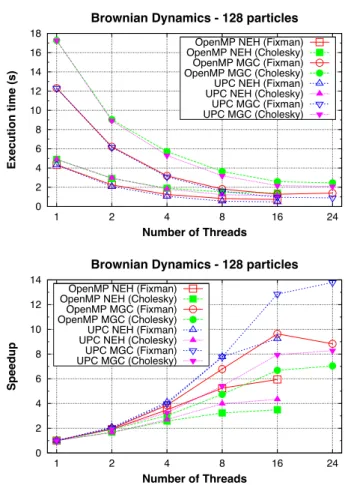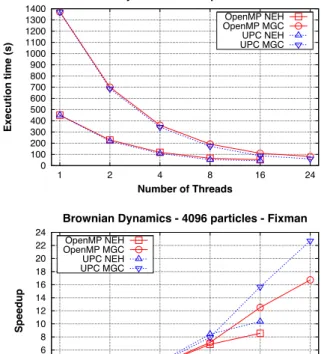TítuloParallel simulation of Brownian dynamics on shared memory systems with OpenMP and Unified Parallel C
Texto completo
Figure




Documento similar
In Section 2 we consider abstract evolution equations with memory terms and prove that the null and memory-type null controllability properties are equivalent to certain
Later, the author gives a rationale for using discrete-event simulation and presents the two main paradigms to model discrete-event systems: the event scheduling and the
This paper presents the design of a component library for modelling hydropower plants, and describes the development of a new simulation tool for small hydropower plants with
However, it is important to remark that our proposed system generates quality test cases, in the sense that almost all the generated cases are valid, for testing memory systems,
8 Future Work 111 8.1 Scheduling Task-Based Programs Using Execution Time Predictability 111 8.2 Sampled Simulation of Task-Based
If the driver is not given a specific region of memory via the lnattach( ) routine, then it calls cacheDmaMalloc( ) to allocate the memory to be shared with the LANCE.. If a
Parallel processes typically need to exchange data.. There are several ways this can be accomplished, such as through a shared memory bus or over a network, however the actual
Expanding our earlier work, we compared two approaches for implementation of adaptive navigation support in e-learning systems (a dedicated interface and an